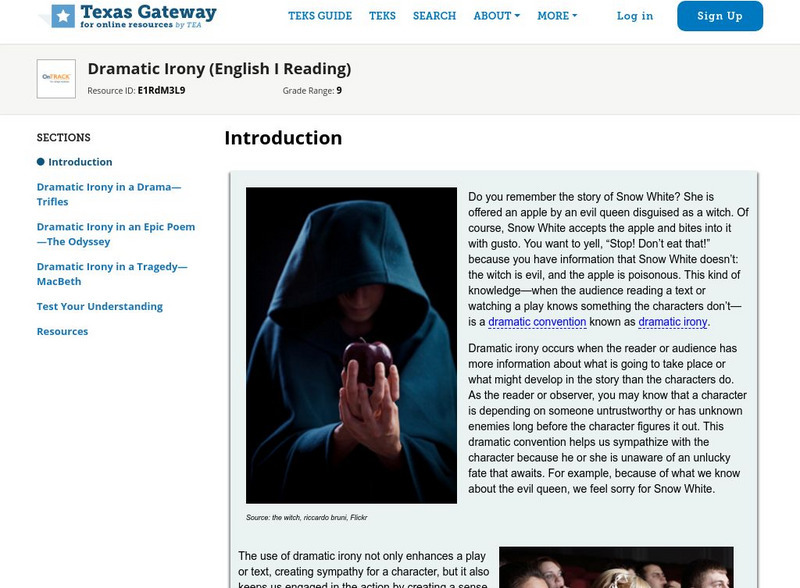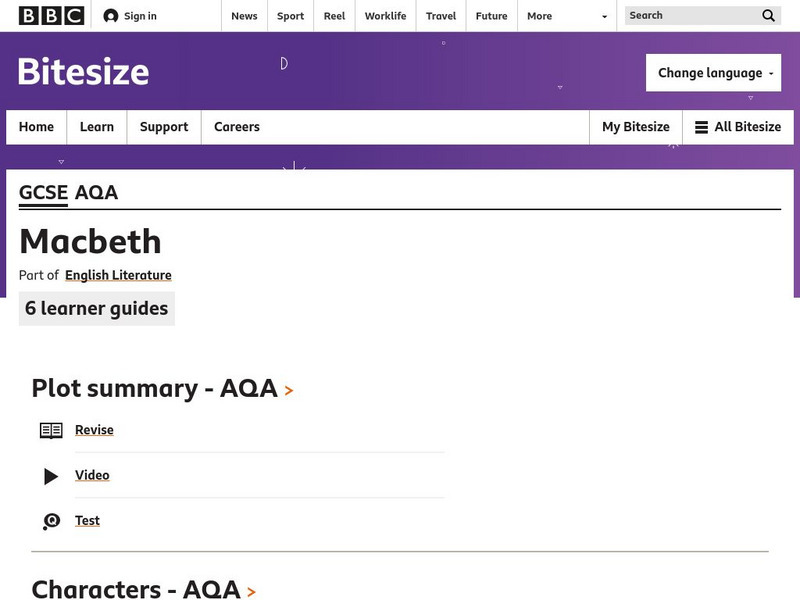EngageNY
Grade 10 ELA Module 4: Unit 2, Lesson 15
What goes around, comes around. Using the resource, pupils read Act 4.3 of Macbeth, in which Macduff and Malcolm plan to attack Macbeth. Scholars then hold a discussion and complete writing activities to analyze Shakespeare's structural...
Curated OER
Macbeth Revision Questions
For this Macbeth revision questions worksheet, students explain certain details about Act one and six from the play. Students identify who said certain quotes and practice writing two essay questions about how they would act if they...
Curated OER
Macbeth: Quotations
In this Macbeth activity, learners read passages from Macbeth and answer the prompts for each one. Prompts include identifying the speaker, describing the context of the quote, and explaining the significance of one of five literary...
Pittford Schools
Literary Devices, Techniques, and Elements
What's the difference between a speaker and an author? What's an example of anthropomorphism? Clarify the meanings of literary devices, elements, and techniques with a comprehensive glossary of terms.
Texas Education Agency
Texas Gateway: Dramatic Irony (English I Reading)
This lesson focuses on dramatic irony, when the reader or audience has more information about what is going to take place or what might develop in the story than the characters do.
BBC
Bbc Education Scotland: Bitesize Revision on Macbeth
This "Bitesize Revision" of "Macbeth" provides summary, discussion, and review of the Shakespearean tragedy. Also includes a "Craft of the Writer" section that discusses the use of blank verse, rhyme, dramatic irony, and imagery.







